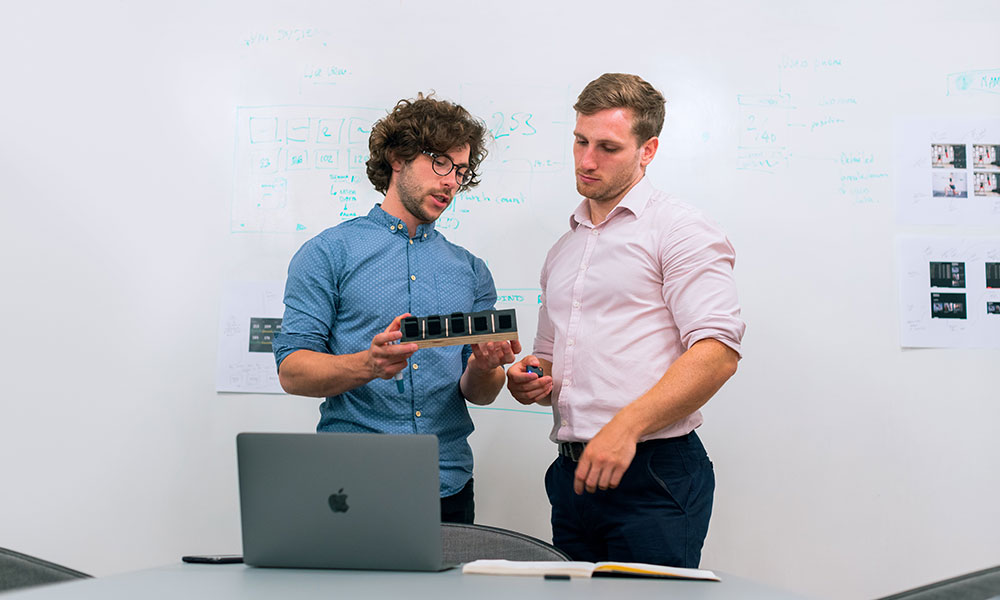Next-Gen HPC & AI Infrastructure in 2025
High-performance computing (HPC) and artificial intelligence (AI) workloads are reaching unprecedented scales in 2025. AI’s meteoric rise is radically transforming data storage and server infrastructure, creating extraordinary opportunities and new challenges. To thrive, organizations must adopt next-generation server architectures engineered for massive parallelism, high density, and efficiency. In this technical overview, we examine the core advances – from cutting-edge CPUs and GPUs to memory, storage, and networking – that are shaping modern HPC/AI infrastructure. We’ll also discuss how these innovations come together in system design, and what enterprise IT architects should consider when building next-gen AI/HPC servers. (For deeper context on AI’s growth, see our blog post on AI’s unstoppable momentum.)
Don’t let your infrastructure be the limiting factor in your innovation. Сontact Server Simply today to harness next-gen HPC & AI infrastructure for your enterprise – and turn cutting-edge technology into tangible business results. Let’s architect the future together.
CPU Advances for HPC & AI
Blazing-Fast x86 Processors:The latest server CPUs in 2025 deliver dramatic leaps in core counts, memory bandwidth, and specialized acceleration. Intel’s 5th Gen Xeon Scalable (Emerald Rapids) introduces up to 64 performance cores per socket (an increase from 60 in the previous generation) along with larger caches and refined 10nm architecture. This yields roughly 20%+ higher general compute performance over its predecessor, while retaining 8 channels of DDR5 memory and PCIe 5.0 I/O support. Intel has also integrated AI acceleration in every core (e.g. DL Boost and AMX extensions) to speed up machine learning tasks on the CPU itself. By comparison, AMD’s EPYC 9004/9005 series (4th & 5th Gen “Genoa”/“Turin”) takes core counts to new heights – up to 96 cores in 4th Gen and an unprecedented 192 cores in 5th Gen built on 5 nm “Zen 5” architecture. These processors feature 12 channels of DDR5 memory per socket (50% more than Intel) and huge memory capacity, plus 128+ PCIe 5.0 lanes for I/O – critical for connecting GPUs and NVMe drives at full bandwidth. The EPYC 9004/9005 family offers unparalleled thread throughput and efficiency, making it a go-to choice for data centers running complex workloads. Both Intel and AMD platforms support Compute Express Link (CXL), an emerging standard (built on PCIe) that enables coherent memory expansion and pooling across CPUs and accelerators. In short, today’s server CPUs provide the raw horsepower and memory bandwidth that HPC and AI workloads demand, while also laying the foundation for memory-centric computing through CXL. (Learn more about CPU advancements in our Intel vs. AMD server guide featuring servers with 4th/5th Gen Xeon and EPYC 9004/9005 processors.)
GPU Innovations: From NVIDIA H100 to Blackwell
GPU accelerators remain the engine of modern AI and are growing even more potent. NVIDIA’s current flagship, the H100 Tensor Core GPU (Hopper architecture), introduced revolutionary features like 80 GB of HBM3 memory, MIG multi-instance GPU virtualization, and 4th-gen NVLink for ultra-fast GPU-to-GPU interconnects. An 8×H100 server can deliver on the order of 5 petaFLOPs of AI throughput, and clusters of such servers power today’s leading AI models. Looking forward, NVIDIA Blackwel GPUs are poised to usher in a new era of performance. The Blackwell B200 GPU represents a groundbreaking advancement in GPU technology, designed to meet the ever-growing demands of trillion-parameter AI models and exascale simulations. Early data shows Blackwell delivering a 30× increase in real-time AI inference throughput compared to the H100 in certain large-language model scenarios. This immense gain comes from architectural leaps – including more GPU cores/Tensor Cores, higher clocks, and likely next-gen NVLink for multi-GPU scaling – as well as innovations like a dedicated hardware decompression engine to feed the beast with data. In fact, a system coupling NVIDIA’s Grace CPU with Blackwell GPUs boasts 8 TB/s of memory bandwidth, accelerating data analytics queries 18× faster than top x86 CPUs and 6× faster than the H100.
Other GPU vendors are innovating as well (for example, AMD’s MI300 APU combines CPU and GPU on one package, and emergent AI accelerators like Graphcore and Google TPUs target specialized workloads). But NVIDIA continues to set the pace in HPC/AI with a holistic platform – GPUs with massive on-board memory, fast NVLink interconnects, and software like CUDA and AI frameworks. Architecturally, next-gen GPU servers are designed to maximize throughput: many designs feature 8 to 10 GPUs per node connected via NVLink/NVSwitch (providing 900+ GB/s peer-to-peer bandwidth), fed by one or two high-core-count host CPUs. These systems often require custom power and cooling (e.g. 5kW+ per server, with liquid cooling solutions for GPU cards) to sustain performance. As AI models grow, GPU memory size is also critical – Blackwell is expected to offer larger HBM capacity, alleviating IO bottlenecks by keeping entire datasets in memory. The role of GPUs in 2025’s infrastructure is thus central: they perform the heavy math for AI and HPC, while new features improve sharing and utilization (multi-instance GPU, dynamic partitioning) to better serve diverse workloads. (For guidance on pairing GPUs with the right servers, read our post on NVIDIA H100 GPU and Supermicro servers, or explore our GPU server lineup featuring the latest NVIDIA A100, H100, and upcoming Blackwell accelerators.)
High-Speed Interconnects: PCIe Gen5/6 and CXL
As CPUs and GPUs get faster, equally advanced interconnects are needed to avoid bottlenecks. The industry has now widely adopted PCI Express Gen5, which doubles per-lane throughput to ~32 GT/s (around 4 GB/s per lane, or ~64 GB/s in an x16 slot). PCIe Gen5 is critical for feeding data-hungry devices like NVMe SSDs and 400 Gb/s network adapters, and for CPU-to-GPU links (a PCIe 4.0 ×16 link at ~16 GB/s could throttle an H100 under heavy IO, whereas PCIe 5.0 ×16 at ~32 GB/s provides more headroom). Looking ahead, PCIe Gen6 is on the horizon (expected in late 2024/2025 servers), again doubling bandwidth (64 GT/s) and introducing PAM4 signaling to maintain signal integrity. This continual ramp in PCIe speeds ensures that future accelerators – think GPUs pushing terabytes per second of memory bandwidth – can be sufficiently saturated with data from the host system or network.
Equally game-changing is Compute Express Link (CXL), an evolving standard that operates over the PCIe physical interface but adds protocols for cache coherency and memory sharing between devices. CXL 2.0 (supported in latest Intel and AMD platforms) allows attaching external memory expanders or accelerators with coherent access to the main memory. In practice, CXL memory pooling means a CPU can treat memory on a CXL device (say, a memory expansion card or even another node’s RAM) as part of its own memory space, with minimal software overhead. CXL introduces a unified memory pool that aggregates memory from multiple devices, allowing the CPU to seamlessly access memory across different modules and accelerators. This enables dynamic memory allocation – memory can be added or shared on-the-fly between CPUs/GPUs – which is powerful for AI/HPC workloads that often need more memory than a single server has. Another key aspect is CXL.cache: accelerators can cache data from host memory with coherency, ensuring data remains consistent across CPU and device caches. In essence, CXL is breaking the traditional boundaries of server memory. In HPC/AI systems, CXL will facilitate new architectures like memory tiers (DRAM + CXL RAM + persistent memory) and even memory disaggregation (large memory pools accessible over a CXL fabric by multiple compute nodes). Future CXL 3.0 will extend these capabilities to multi-host sharing and support for switching, making truly composable memory a reality. Server designs in 2025 are already gearing up for this: for example, some motherboards include CXL slots for add-in memory modules, and high-end systems like the Supermicro 5U SYS-521GE-TNRT support CXL devices alongside GPUs to boost memory capacity for AI workloads. (For a deep dive on CXL, refer to our post “CXL Memory Solutions for High-Performance Servers” which explores CXL architecture and use cases.)



